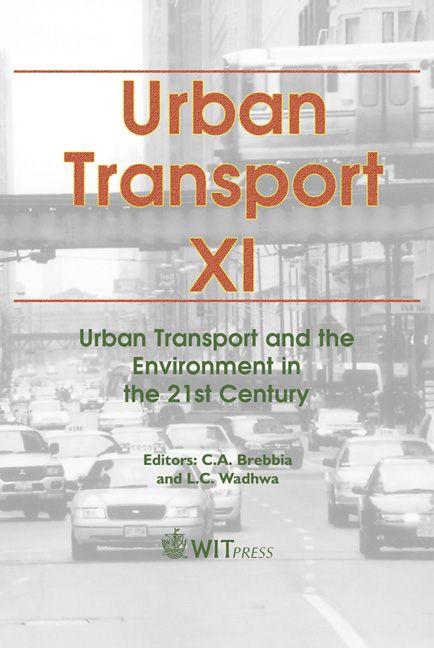The Impact Of Urban Traffic And Environmental Conditions On The Housing Market: An Analysis Of Italian And Slovenian Urban Areas
Price
Free (open access)
Transaction
Volume
77
Pages
8
Published
2005
Size
386 kb
Paper DOI
10.2495/UT050781
Copyright
WIT Press
Author(s)
P. Amrusch
Abstract
Urban traffic has been shown to affect the housing market. The objective of this paper is to explore the impact of urban traffic on the property market in a \“former” and a \“new” EU-member country. In this context, this article investigates the relationship between the property price effect due to changes in environmental conditions and the countries’ purchasing power. The paper starts with the estimation of the marginal willingness to pay for air quality in the North-Italian town of Padua by applying the hedonic pricing method. Since Italy is bordering on the new EU-member country Slovenia, a further hedonic model is set up for urban areas in Slovenia. Consequently, the impact of the urban traffic on the housing market is discussed from different perspectives considering the location-specific differences and similarities regarding the housing market, urban transport systems, economic development and environmental criteria related to urban traffic. In the first section, the hedonic pricing models are developed by disaggregating homogenous areas within Italian and Slovenian towns regarding accessibility, socio-economic criteria, other environmental factors etc. The next section involves the estimation of hedonic regressions. Finally, the results are presented with the focus on the influence of the urban traffic (and other environmental conditions) on the property prices with similar geographic and environmental pre-conditions, but differences in public policy and economic development. Moreover, possible future implications of the urban traffic systems are indicated. Keywords: urban transport, purchasing power disparities, hedonic model, housing market, environment, supply roads, traffic density.
Keywords
urban transport, purchasing power disparities, hedonic model, housing market, environment, supply roads, traffic density.





